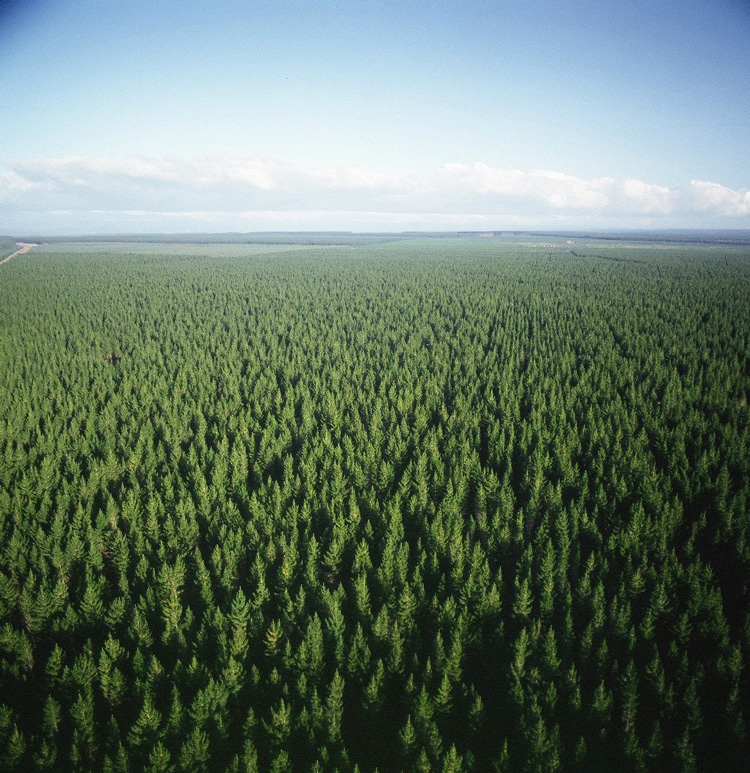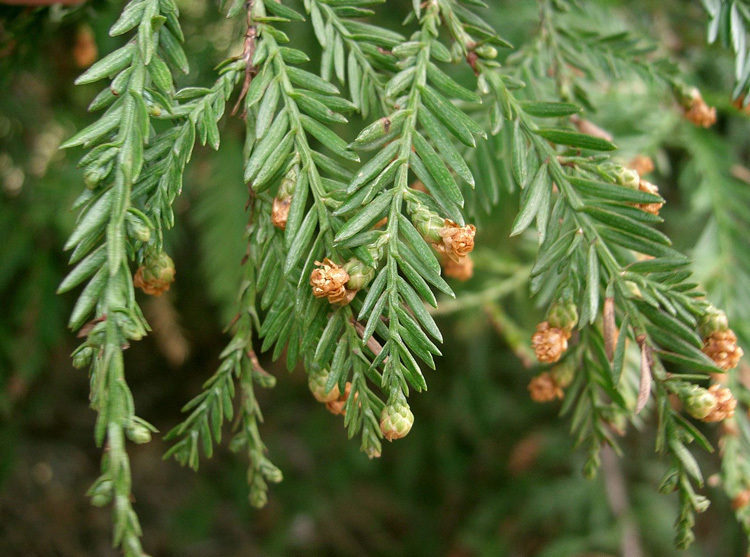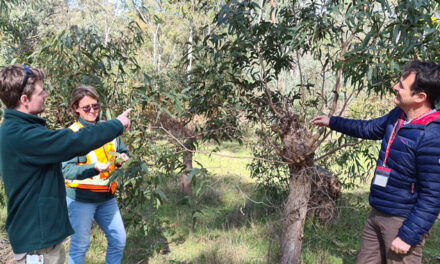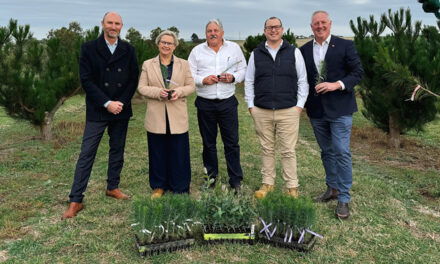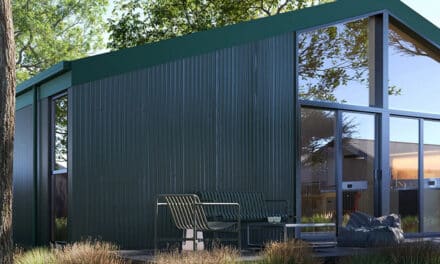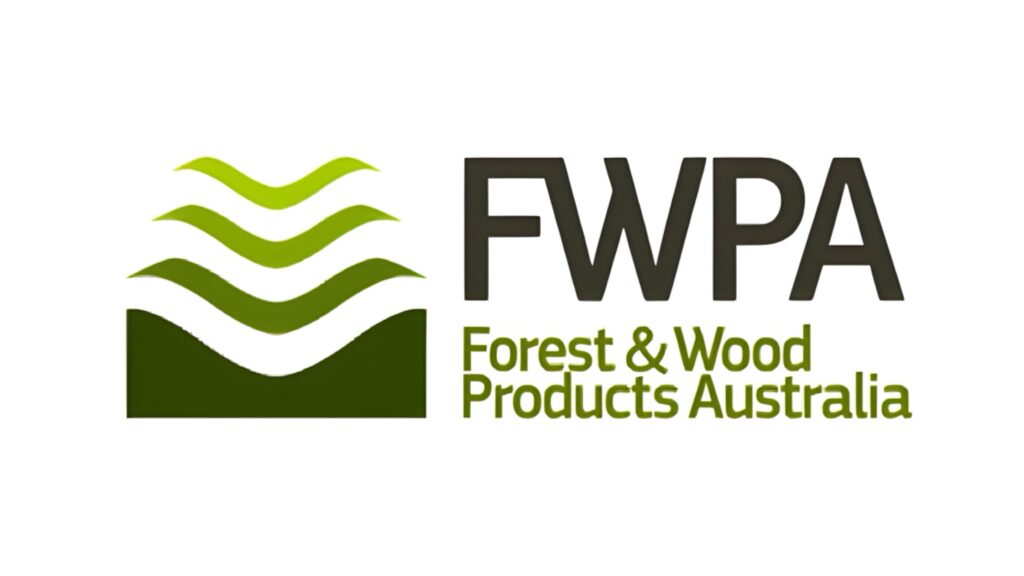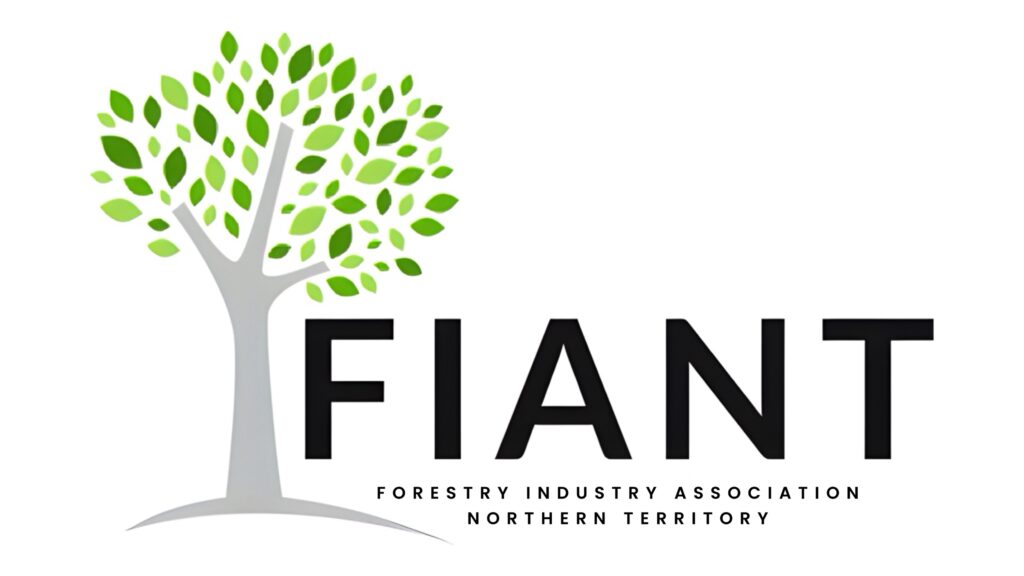SOLVING THE ISSUES FOR PINE ALTERNATIVES
A NEW ZEALAND REPORT HIGHLIGHTS THE BENEFITS AND CHALLENGES OF DEVELOPING ALTERNATIVES TO PINE
Central North Island pine forest: investment is a significant barrier to commercial-scale development of suitable alternative exotic species.
Sequoia sempervirens with pollen cones.
Image: KENPEI, CC BY-SA 3.0 via Wikimedia Commons
In a follow-up to last week’s article in T&FN Issue 788 on the New Zealand forest industry’s reliance on a single species (Pinus radiata), we look further at a shortlist compiled by Scion researchers of viable exotic species that could mitigate the risks inherent in that strategy.
The authors/collaborators* of the report ‘Stock Take of the Commercially Viable Alternatives to Pinus radiata’ highlighted 12 species “with established potential or known attributes that support their use as ready-to-plant alternative commercial species”.
The researchers took into account several important characteristics in compiling the shortlist: timber productivity; the value, usability and marketability of each species’ timber; their adaptability across a range of growing conditions and their potential climate resilience or resistance to pests/diseases.
Further, they noted that “particular investment in species with high growth rates should be encouraged, as these could fulfil as high-volume contingency timber species for radiata pine.”
By way of contrast, a number of the selected species with low anticipated rates of productivity (or reduced levels of climate adaptability) were also considered as possible alternatives to pine, given that they possess timber with a potentially high market value, which could be developed rapidly using domestic processing.
Among the most promising species for consideration was Sequoia sempervirens (redwood). It has a fast growth rate, and is noted as being particularly free of pests and pathogens, while its timber is suitable for appearance-grade applications.
*Authors/collaborators: Alan Jones, Toby Stovold; Gary Fleming, Vaughan Kearns, Dean Satchell, Rob Webster (Farm Forestry Association); and Paul Millen (New Zealand Dryland Forests Innovation).
The researchers added that the longevity of the species makes it an excellent choice for permanent forests that can continually sequester carbon and supply timber.
Various fast-growing eucalypt species (currently involved in a number of trials) are believed to be suitable for a range of present-day or possible future climates – particularly with respect to drought.
The study noted that Eucalyptus spp. cover a range of credible uses – as construction timber, in high-value non-structural applications and as a source of bioenergy and pulpwood.
Other shortlisted species of note included cypresses (which are adaptable to warmer climates, have a low pest/disease risk and produce durable, high-value timber) and macrocarpa (also durable and of high value, with an existing domestic processing industry and market, but prone to canker in warmer locations).
Overall, the various highlighted species “have a range of potential attributes suitable for development into new circular bioeconomy value chains”.
The researchers added that “socio-economic benefits and ecosystem services available from commercial forests could be enhanced if a mix of exotic species were grown within ‘transitional’ forest management systems – potentially also incorporating adaptive silvicultural practices such as continuous cover forestry and the ecological co-benefits of growing multiple commercial tree species in one setting.”
A gap analysis assessment workshop, involving a panel of experts, emphasised a range of issues/priorities that needed to be addressed in the development of market-ready alternative species. They included developing value chain business cases, changes to building standards legislation to enable the wider use of alternative species in construction settings and familiarising the public with the available options and how to grow them.
Value chain analysis determined that the greatest initial limitations with most species “arise with germplasm availability, breeding development and propagation capacity”. Challenges with wood processing and manufacture, sales and distribution and end-of-life processing were also identified to varying degrees with most species or groups.
The shortlisted species have already been the subject of extensive breeding, planting and silvicultural research – but not necessarily within New Zealand.
The report’s authors concluded that specifically tailored investment to increase species’ knowledge in a domestic setting should lead to improvements in their commercial viability – and a range of co-benefits (bioeconomic, environmental and social) that “extend beyond the obvious advantages of increased market diversification or system resilience … Development work should focus on the most cost-effective, or rapid-to-solve alternative species first…” which are cypress, eucalypts, redwood and Japanese cedar.


